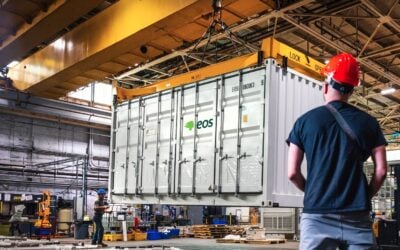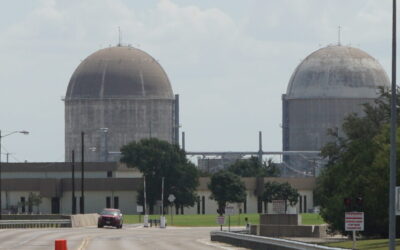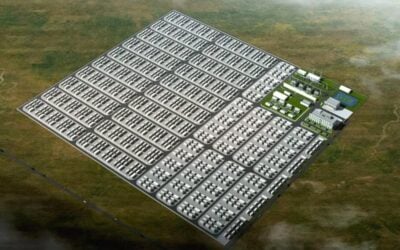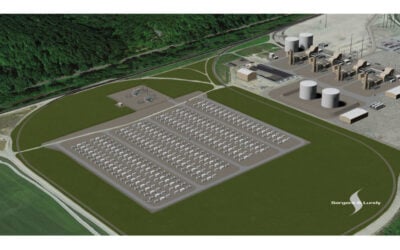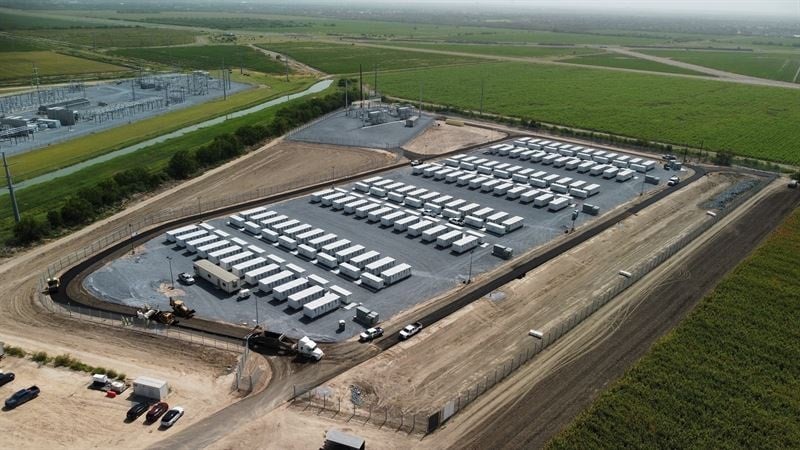
Energy storage projects in the US need to be 40% US-made to qualify for the ITC domestic content adder, rising to 55% from 2027 onwards, the IRS has said.
The US Internal Revenue Service (IRS) has revealed the requirements for clean energy projects, including energy storage, to qualify for the 10% domestic content ‘adder’, or bonus credit, to the investment tax credit (ITC).
Enjoy 12 months of exclusive analysis
- Regular insight and analysis of the industry’s biggest developments
- In-depth interviews with the industry’s leading figures
- Annual digital subscription to the PV Tech Power journal
- Discounts on Solar Media’s portfolio of events, in-person and virtual
Notice 2023-38, posted last week (12 May), spells out the degree to which a battery energy storage system (BESS) being deployed needs to be manufactured in the US to qualify for the 10% uplift to the new standalone ITC.
The guidance has been eagerly-anticipated by the industry and the delay may be partially to blame for fewer new projects being announced since the start of the year.
It separates the portions of a clean energy project into Steel/Iron parts and ‘Manufactured Product’ parts with different requirements for each.
The Steel/Iron portion for energy storage only covers rebars used in the concrete foundation of a system, according to the notice, and these need to be 100% US-made. Manufactured Product covers the battery pack, the battery container/housing and the inverter.
For the Manufactured Product, i.e. the BESS and inverter, it needs to be 40% US-made if construction starts before 2025 and 55% from 2027 onwards to qualify for the 10% adder. The years pertain to the date on which construction starts.
Various law firms have said that the percentage – termed the Adjusted Percentage – will be increased in phases, to 45% in 2025 and then 50% in 2026, although this is not in the IRS notice.
The calculation of these figures is based on the project costs, and uses categories of Product and Component. The Manufactured Products are defined as BESS and inverters, and the BESS product Components include the cells, packaging, thermal management and battery management systems (BMS).
Products and Components totalling 40% (until 2025) of the Total Manufactured Products Cost need to be manufactured in the US (and 55% 2027 onwards).
To be considered ‘manufactured in the US’, all of the manufacturing processes of a Manufactured Product (BESS, Inverters) need to have taken place in the US and all of its Components (cells, packaging, BMS etc) need to be of US origin.
But crucially, a Component is considered of US origin if it is manufactured in the US “….regardless of the origin of its subcomponents”. This implies that battery cells would need to be manufactured in the US, but not necessarily the underlying raw materials and subcomponents that go into them.
The 40-55% figure also means that BESS projects could qualify whilst still using battery cells from abroad since these typically equate to 40-50% of a project’s cost (although may have gone higher last year). However, the BESS and all other parts of the project would need to be assembled/manufactured in the US to make up the difference.
The note clarified that the 100% requirement for the Steel/Iron portion of a BESS Project does not apply to the steel or iron used in a Manufactured Product, i.e. the BESS itself or inverters, something that was raised as a possibility by an executive from Wärtsilä when discussing the topic at Energy Storage Summit USA in March.
It spelt out what examples of these might be: “items such as nuts, bolts, screws, washers, cabinets, covers, shelves, clamps, fittings, sleeves, adapters, tie wire, spacers, door hinges, and similar items that are made primarily of steel or iron but are not structural in function are not subject to the Steel or
Iron Requirement”.
Read the full notice from the IRS here, which also has details on timeline and how to certify on a tax return that a project qualifies for the bonus domestic content credit. See our sister site PV Tech‘s coverage of how the domestic content requirements relate to solar PV here.
The US has been ramping up its investments into both upstream and downstream clean energy projects, including storage, in response to the ITC and other incentives and funding programmes as part of the Inflation Reduction Act.
Since the Act passed in August last year, some US$150 billion has been announced in investments in the US’ clean energy sector.

